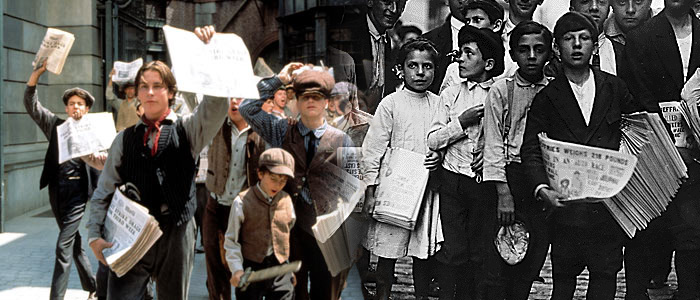Inspiration
Newsies: the real story compared with the Movie/Musical
Newsies, the movie from Walt Disney Studios, was a significant influence in the writing of Calling Extra. I was ten years old when the film premiered in theaters, and I replayed my VHS so much that it wore the tape down and distorted the audio of the musical numbers. My profound interest in the actual event…
Read More